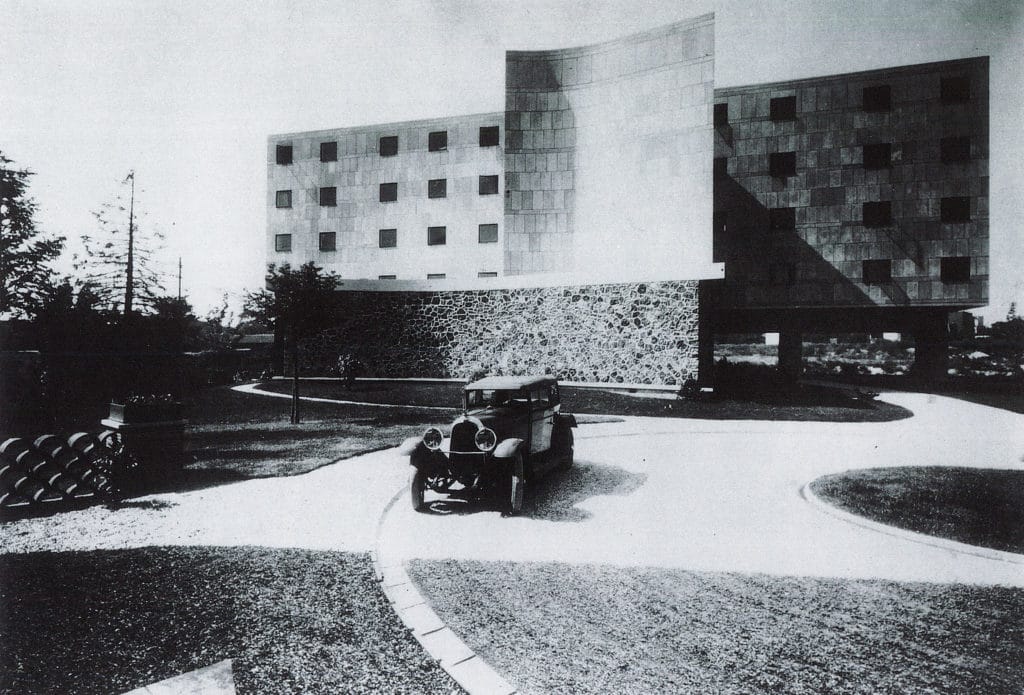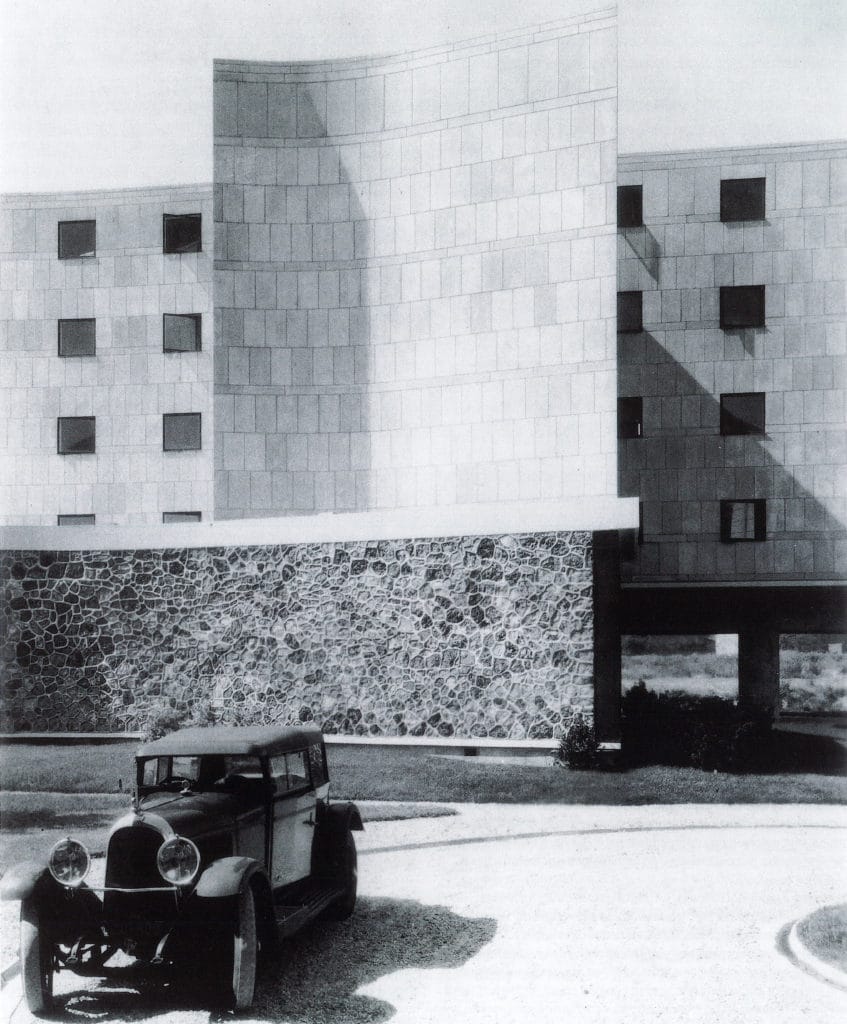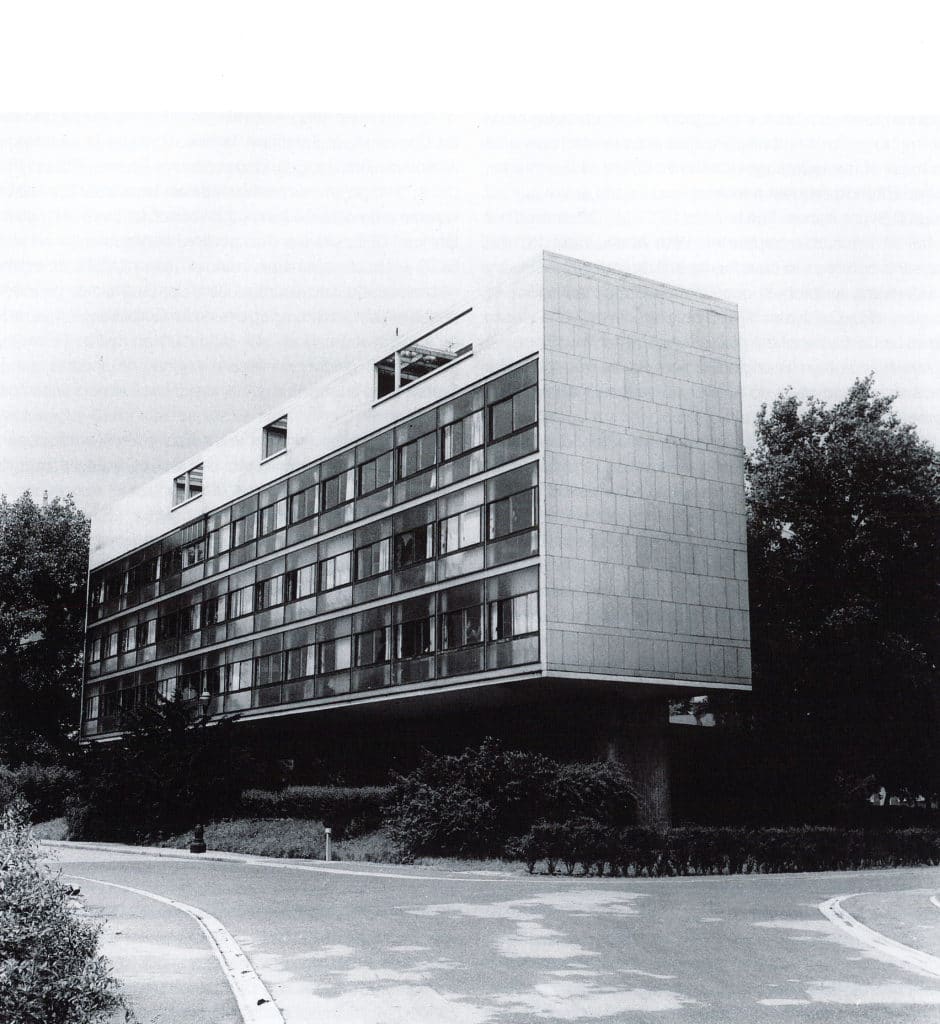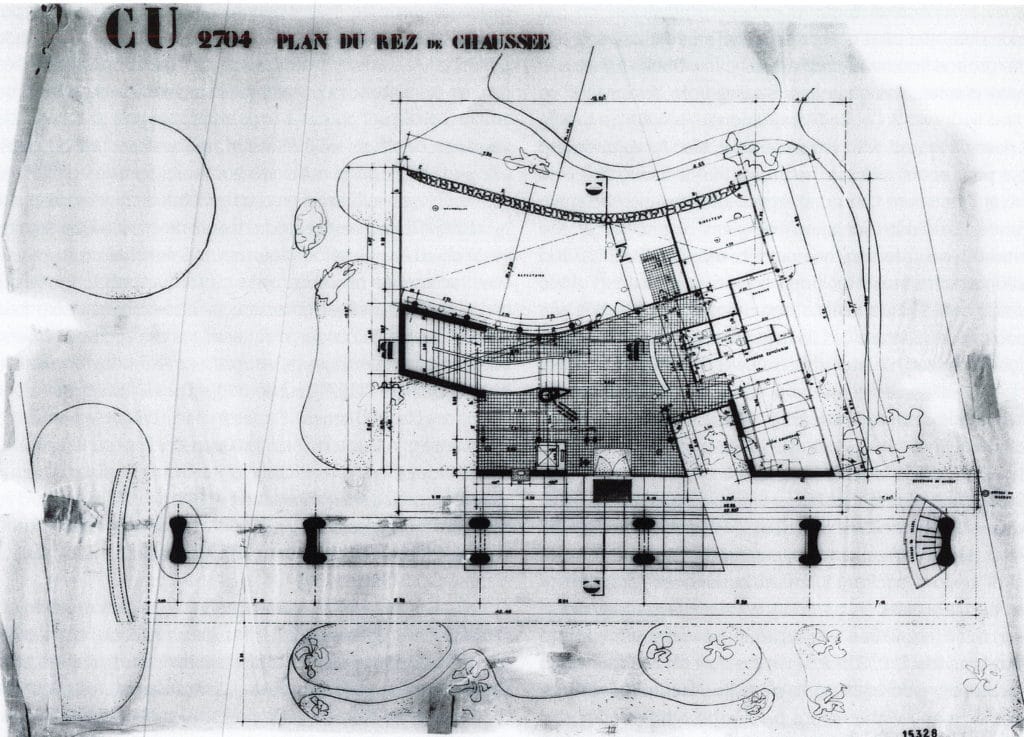St. Luke’s New Orthopedic Hospital
MKSD is proud to again partner with St. Luke’s as the architect for the latest SLUHN Orthopedic Hospital in Allentown. …
Read More >Chris Worton, RA is MKSD’s resident architectural history guru and during the pandemic when we were all working exclusively at home, he began writing a daily feature for the staff on our Teams page. He impressed us all with his vast knowledge and enthusiasm and we looked forward to reading each new installment.
So, instead of keeping this ourselves, we thought we should share some of his posts with everyone. Enjoy!
Pavillon Suisse, Le Corbusier by Chris Worton, RA
Designed and built between 1930 and 1931, the Pavillon Suisse was built at the Cite Internationale Universitaire in Paris to house students of Swiss nationality. It embodies, to a large degree, Le Corbusier’s Five Points of Architecture, but goes much beyond them thematically.

The building, in simplistic terms, consists of an elongated bar, which houses the student rooms, and an attached building on the ground level that houses the common spaces. The whole of the building itself, however, has three distinct facades. First is the attached appendage at Ground Entry. The material on this is stone that has been split along the face, thus giving an unexpected two-dimensional appearance to this rubble wall.

But, on closer examination, one can read a three-dimensionality to the wall as the mortar between the stone throughout the wall pops-out beyond the stone face; in fact, it practically oozes out of the wall itself. The wall appears to be crudely built; it is primitive, it is archaic, and it is far from the modernity one expects to find in Le Corbusier’s buildings and his Five Points of Architecture.
Beyond this primitive, archaic piece is the raised bar of the building itself. The façade that serves as a backdrop to the ground level appendage seems much better constructed. There are smooth panels, smooth joints, and there is a regularity to the window sizes and patterns. But it is still not wholly modern either. There are no large expanses of glass nor any ribbon windows, only small punched openings in a solid wall. It is more advanced than the primitive appendage below, but it still has a somewhat traditional feel. What it does have in common with the ground level appendage is that there is a flat-ness and two-dimensionality to the wall. The rubble wall and the paneled wall are both as flat as pancakes with their materials.
It is not until the third and final façade that one reads something truly modern.

It is here that the raised bar is fully understood. In contrast to the paneled façade, the façade above ground level here is a curtain wall. It is fully glazed – there are no punched openings here. The façade is advanced – it is modern.
With the presentation of three different facades in the building, Le Corbusier is presenting a narrative, or rather, a “tour” of architectural history. The building starts at the first moment of architecture (the primitive, rubble wall), then to a traditional moment in history (the south wall with regular punched openings) to the, at the time, last moment of architecture (the curtain wall). It also presents the dichotomy often seen in architecture, from the heaviness of buildings in earlier moments of the past (the rubble wall and the solid wall) to the lightness of the present day (the curtain wall, raised up on pilotis).
The “tour” of architectural history is also seen in plan as well, particularly in the bar of the plan.

The bar of the building is raised up, but there is a transformation that occurs within the supports themselves. The supports start at the ends as long piers/ walls that are shaped like “dogbones”, then morph into something akin to embedded columns coming out of a wall, to (2) separate columns in the middle of the bar. Again, it is a progression from something that is primitive (i.e. “walls”) to something that is modern (i.e. columns, or rather, “anti-walls”) The facades support this idea as well: the three facades echo the idea of materiality in relation to structural logic in that the primitive wall (the rubble wall at the Ground Level Entry) is “down/ on the ground” and the modern wall (the curtain wall on the far façade) is “up/ in the air”.
Image Citation.
All Images from Le Corbusier Pavllon Suisse, The Biography of a Building, Ivan Zaknic. Birkhauser, Boston, MA. 2004. [Image 1: Page 218; Image 2: Page 221; Image 3: Page 319; Image 4: Page 166]
MKSD is proud to again partner with St. Luke’s as the architect for the latest SLUHN Orthopedic Hospital in Allentown. …
Read More >February 7, 2017 – Several members of the MKSD team attended last Thursday’s luncheon for the Forum for Ethics in…
Read More >We won! MKSD is proud to be named Best Architectural Firm for the 5th year in a row and Best…
Read More >